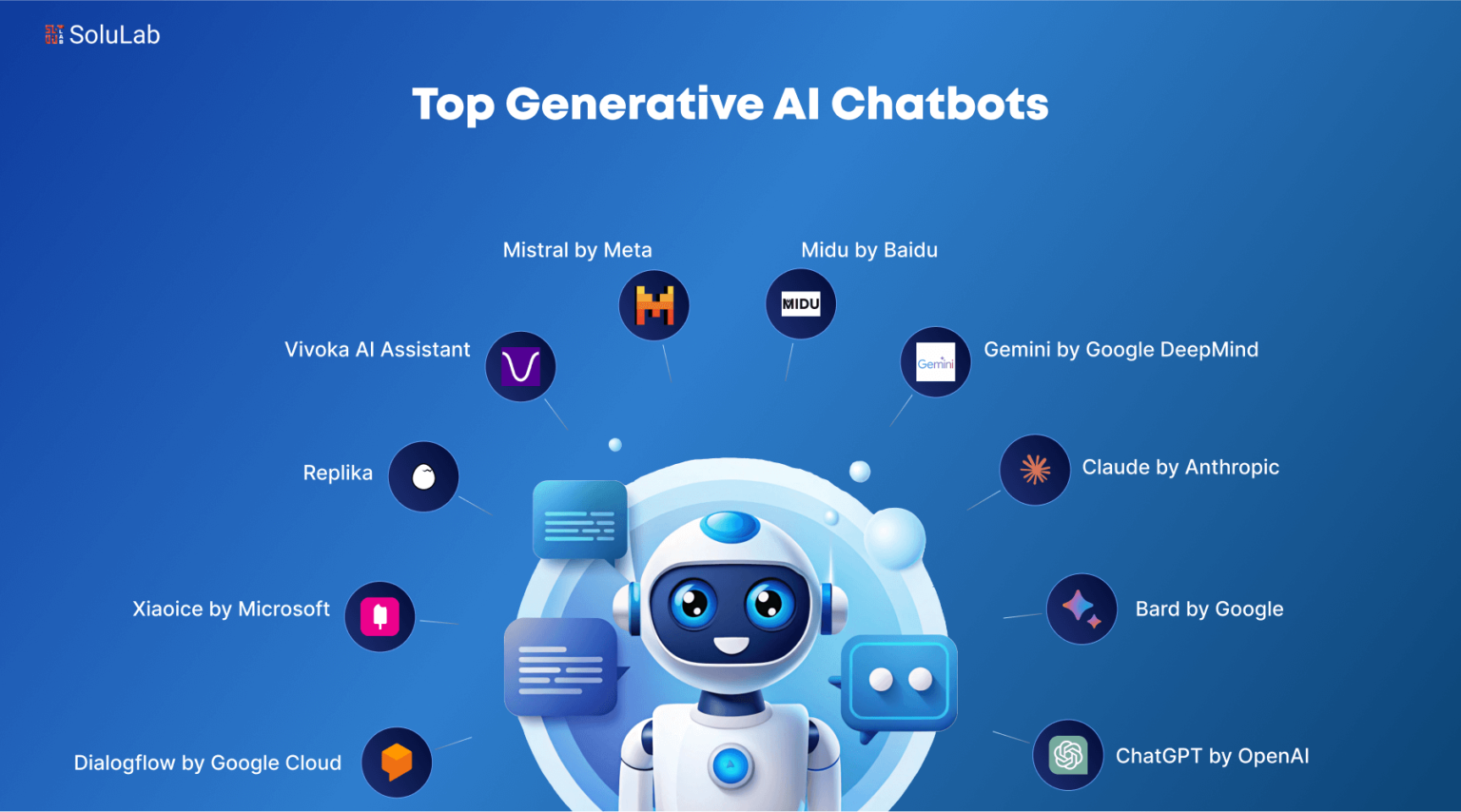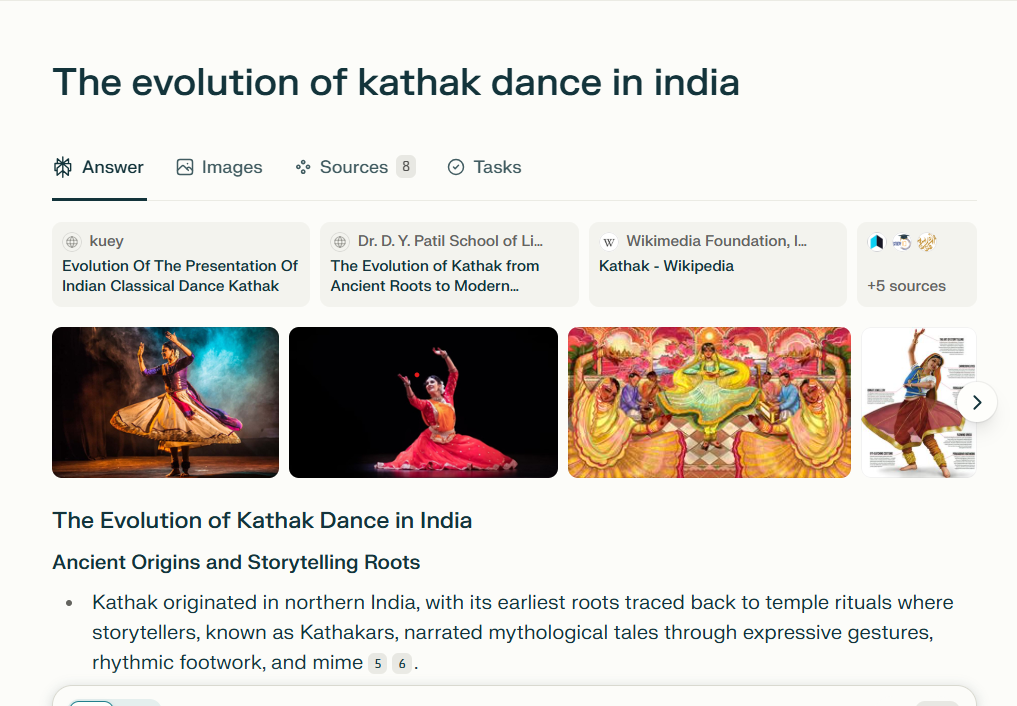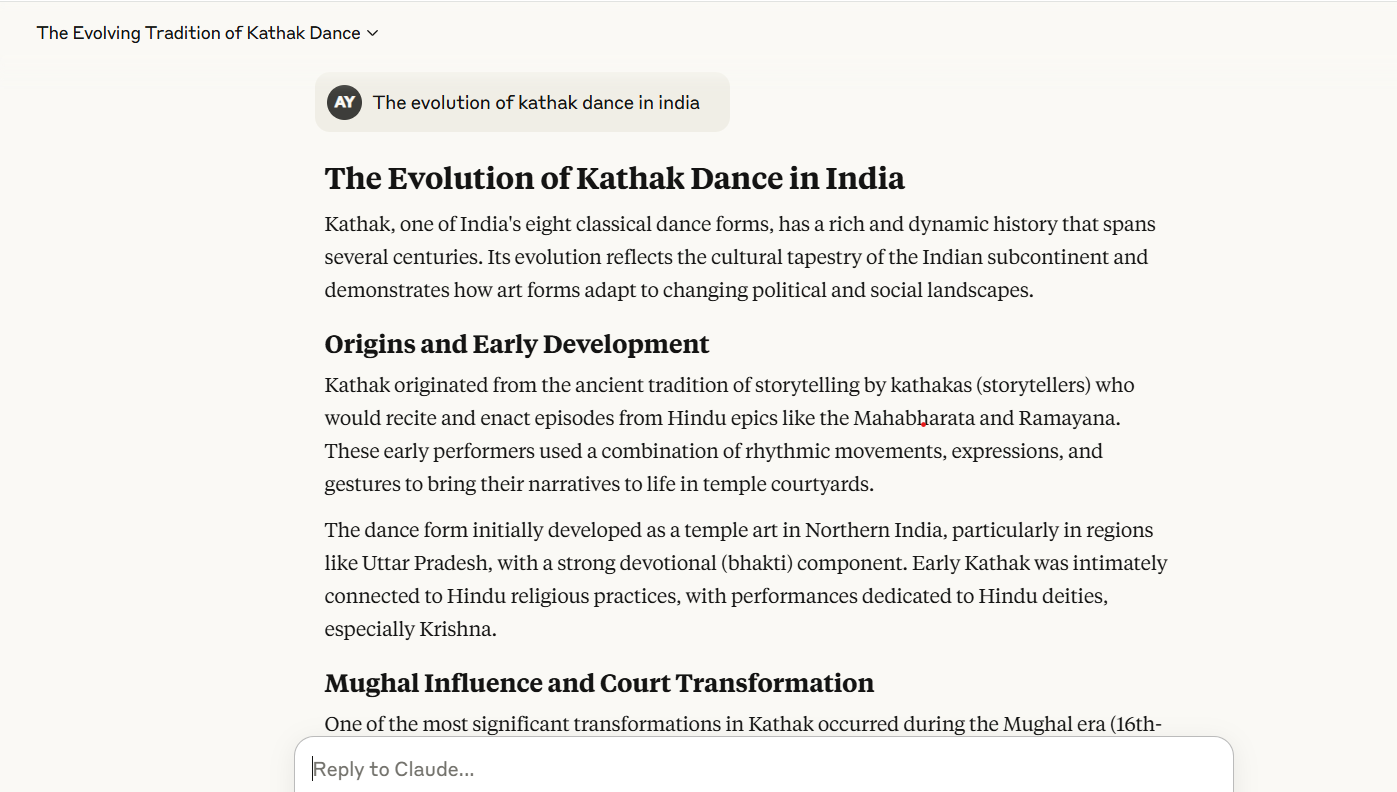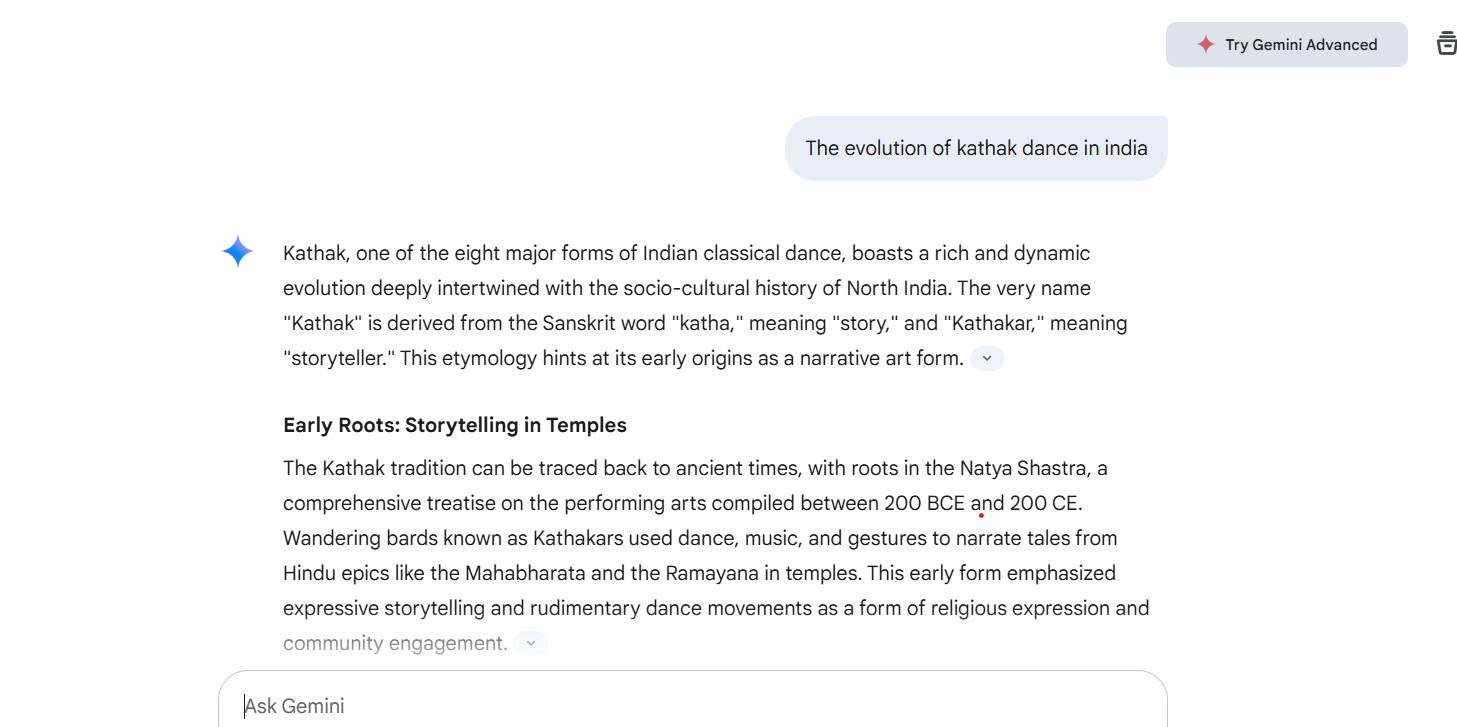AI and ML in 2025: Powering the Next Generation of Smart Chatbots
Table of Contents

The artificial intelligence and machine learning (AIML) sector is transforming at a fast rate, with more attention towards chatbots.
Chatbots are evolving from simple question-answering devices to complex interactive beings that can communicate effectively, comprehend complex questions, and perform in ways we think customers will. Simply put, a chatbot can answer simple questions, understand your preferences, suggest products you might love, and connect you to a variety of services without requiring your attention. Well, this is not science fiction; we are living this today.
The chatbot landscape is booming, with the market projected to soar to USD 7.76 billion in 2024 and an astonishing 23.3% CAGR expected from 2025 to 2030. This growth isn’t just about numbers; it’s about the powerful impact these technologies will have on our interactions and business operations.
In this blog, as we explore the innovations and trends shaping the future of smart AI/ML chatbots, prepare to be captivated by how these advancements will enhance user experiences, drive efficiency, and redefine customer engagement in ways we’ve only dreamed of.
The Chatbot Revolution: Stats That Speak for Themselves

*masterofcode.com
To understand the landscape of chatbot technology, data is important. While most people still associate chatbots with customer service, some recent surveys have shown that chatbots may do more than assist customer service enquiries.
- 38% of consumers felt that chatbots should offer deals and promotions.
- 31% stated that chatbots would assist in customer service.
- 17% felt they could get hours or locations.
- 7% look for personalisation in product selection.
- 6% simply want to buy directly from the chatbot.
The numbers suggest that chatbots are not simply responding machines; they are automated responses to potentially increase sales and improve the personal experience.
AI Chatbots for Business: The Latest Innovations
As of April 2025, a range of revolutionary technologies is changing the way businesses interact with their customers and optimise processes. Let’s take a closer look at what is new and exciting in the world of AIML chatbots.
1. Integration of Multimodal AI Models

*solulab.com
With recent advances, modern chatbots are using multimodal capabilities, allowing them to comprehend and create images, videos, and audio, not just text. This means there are more options available to companies for interacting with a customer in a ‘less rigid’ way.
Example: Amazon’s Nova Sonic allows users to just talk to the assistant via a voice command. Technology like Nova Sonic is beneficial from a business implementation perspective and in call centres where a customer waits in a queue, especially when they have a common question to ask. This will reduce wait times in call centres and improve customer experience.
How it works: The system receives audio input, which is converted to text, as well as identifies intent and converts applicable context to a conversational voice and replaces the original audio with the assistant’s newly recorded input for use by the customer.
2. Enhanced CRM Integration
Integrating AI chatbots with Customer Relationship Management (CRM) systems allows businesses to access customer histories and preferences in real time. This AI/ML feature enables chatbots to provide personalised responses during interactions.
Example: HubSpot’s ChatSpot can schedule meetings, draft emails, and analyse leads based on voice or chat prompts, eliminating the need for manual data retrieval.
How it Works: Secure API connections allow chatbots to pull real-time data, crafting tailored responses that enhance user engagement.
3. Adoption of Agentic AI
Agentic AI refers to autonomous systems that can self-initiate to accomplish tasks related to defined goals. These intelligent agents can monitor and analyze data or document content, trigger workflows, and handle all types of human troubleshooting – without humans.
Example: UI Path sustains agentic AI/ML via solutions transforming processes like employee onboarding, invoice monitoring, and claim processing.
How It Works: These agents follow a collection of rules and logic, combined with natural language understanding, then follow the workflow while applying decisions based on context, thereby accomplishing objectives independently.
4. Real-World Applications and Case Studies
AIML-powered chatbots are demonstrating their value in all sectors. Here are a few examples of their potential use:
- Deloitte’s Paird is a tool for auditors that helps to summarise meeting notes and locate action items, all with a few clicks instead of the manual labour of summarising.
- Amarra, a dress distributor, uses AIML to generate product descriptions and manage their product inventory, which not only manages overstock situations but also enhances marketing allocation and involvement.
5. Technical Insights: Prompt Engineering and API Utilisation
The success of chatbots is highly dependent on good prompt engineering—the real hero behind the scenes who can create the right instructions that handle AI responses efficiently.
Example: Instead of giving a prompt like “Write a summary” (which is rather vague), you could create a prompt like “In no more than five bullet points, summarise this document with a focus on action items.”
How it Works: Prompt engineering is a way to govern AI behaviour. API connections allow chatbots to interact with live data sources and complete tasks, rather than just provide responses.
Core Machine Learning Algorithms Powering Modern Chatbots
Today’s advanced chatbots operate on a mix of sophisticated machine learning algorithms that enhance their conversational abilities. Each algorithm plays a crucial role in how chatbots understand and respond to user queries.
Natural Language Processing (NLP) Fundamentals
NLP is the cornerstone of a chatbot using AIML technology, enabling machines to interpret and respond to human language. Artificial Intelligence Markup Language (AIML) is a specialised XML dialect used to create natural language software agents, commonly used in chatbots and conversational AI. It comprises two critical components:
- Natural Language Understanding (NLU): Helps comprehend user intent and extract key information from queries
- Natural Language Generation (NLG): Creates coherent and contextually relevant responses.
NLP allows chatbots to recognise user intent, understand emotions, and even correct spelling mistakes, making them invaluable business tools.
Supervised Learning for Intent Recognition
Supervised learning trains chatbots to recognise user intentions using labelled data. This method connects user inputs with desired outcomes, allowing chatbots to classify queries effectively.
How it Works: Algorithms are trained on data sets with predefined labels, enabling chatbots to identify intents and respond appropriately.
Unsupervised Learning for Pattern Discovery
Unsupervised learning operates on unlabelled data, allowing chatbots to identify patterns without explicit guidance. This approach is particularly useful for analysing unstructured conversations.
How it Works: Algorithms sift through raw data to uncover trends and group similar enquiries, enhancing the chatbot’s ability to provide relevant responses.
Reinforcement Learning for Conversation Improvement
Reinforcement learning enables chatbots to improve through interaction. By engaging with users, chatbots learn which responses yield the best outcomes.
How it Works: The system uses rewards to adjust behaviour based on user interactions, gradually refining its conversational strategies for better engagement.

*solulab.com
The 5 Best AI Chatbots of 2025
AIML is constantly changing, and chatbots have become a necessity for both businesses and users. They provide novel approaches to customer service, information searching, and in some cases, personal assistants. Here are five of the best AIML chatbots available right now: ChatGPT, Perplexity, Claude, Gemini, and Microsoft Copilot. This is not a ranked list, but each chatbot has its unique strengths.
ChatGPT
OpenAI’s ChatGPT may be the most powerful and well-known brand name in chatbot software. It has a variety of useful features, especially its ability to solve advanced problems and understand complex language prompts. For businesses, it is easy to see why people are drawn to ChatGPT.
The overall responses from ChatGPT are perhaps its most impressive feature. For instance, when it was prompted about the evolution of Kathak dance in India, it provided approximately 1000-word responses that addressed a holistic understanding of Kathak dance, including the history, modern innovations, and royal patronage.

ChatGPT is visually pleasing, and its interface is easy to use. While there are some distracting icons, it is designed so that users can concentrate on typing questions and learning the information generated by ChatGPT. However, it does not provide helpful citation sources to support the facts you are provided with, which could be problematic for some users.
Perplexity
Perplexity is a fantastic alternative to traditional search engines, focusing on personalised information retrieval. Unlike typical search engines that return a list of links, Perplexity summarises results and cites sources, making it easier for users to grasp information quickly.

Perplexity’s interface is user-friendly, and its responses are well-organised chronologically. For instance, when exploring the evolution of kathak dance in India, it highlighted ancient and temple origins from different periods and discussed shifts in the adoption of kathak dance, including the Revival and Modern Era.
Claude
Claude AI, from Anthropic, is known for prioritising ethical AI development. Although the models have silly names, Claude Haiku, Claude Sonnet, and Claude Opus, they are established on different levels of complexity and performance.
Claude speaks in a conversational manner; this makes the communication feel more like a real conversation than perhaps with other Chatbots. In fact, it is quite simple in terms of its user interface, and remembers your past conversations with things you have said, so you can return to either search or remember exactly the things you said before. Claude also has an active Reddit community that allows for interaction and community experience.

Google Gemini
Gemini has the advanced Gemini 1.5 Pro model, which is impressive for information queries and documents. Importantly, it can do more than Text, too! Users can also create videos, images, and even run Python code in the interface.
When you ask a Gemini about the evolution of Kathak dance in India, it will give you a genre-focused narrative to work with instead of a traditional linear summary.

Gemini’s interface is very clean and easy to use. It has explicit disclaimers to reinforce users’ need to check their information. This was an encouraging degree of transparency.
Microsoft Copilot
Microsoft Copilot introduces a personal touch by asking users for their names, creating a more engaging conversation. It integrates seamlessly with Microsoft Office products, making it a great option for businesses looking to streamline workflows.
Copilot offers both a free version and a Pro subscription with enhanced capabilities. Its response to queries is conversational, inviting further discussion. Copilot also features effective help resources and a strong user community, making it a valuable asset for users seeking support and collaboration.
Emotional Connection: Why It Matters
In this era of digital conversations, customers’ emotional connections to brands can transcend the importance of efficiency. While smart chatbots are designed to streamline help desk environments, part of their function, as they relate to the user’s emotional engagement, can yield authentic relationships.
Theoretically, a chatbot could identify when a customer is frustrated by the tone of their texts and change the interaction into one that comforts and reassures the customer. The emotional investment of both sides would add significantly to the customer’s experience in dealing with the chatbot, as a relationship would be fostered by the emotional intelligence. This is an excellent vehicle for improving customer satisfaction and loyalty.
Building Trust Through Transparency
Transparency is key to building trust with users. As chatbots become more integrated into our daily lives, businesses need to communicate clearly about how these technologies work. Users should feel confident that their data is handled responsibly and that chatbots are designed to serve their best interests.
The Importance of Feedback Loops
Incorporating feedback loops into chatbot interactions allows continuous improvement. By encouraging users to provide feedback after conversations, businesses can refine chatbot responses, ensuring they grow more effective over time. This not only enhances the user experience but also demonstrates a company’s commitment to listening to its customers.
Conclusion
Looking to the horizon, it’s clear that smart chatbots will drastically change how we interact with technology. With their ability to inbuilt human-like understanding and technology-based analytics, businesses with AI markup language will be able to engage their customers.
Whether through personalised shopping, frictionless multi-channel interaction, or smart proactive conversations, the potential for chatbots in 2025 and beyond is limitless. If businesses are ready to harness these technologies, the rewards will be successful.
The chatbot revolution has just begun, and our future is looking just as exciting. The question is, are you prepared for it? If not, buckle up your seat and enrol in an Online MSc in AI through Jaro Education and boost your career with AI brilliance. Jaro Education is one of India’s leading online higher education and upskilling companies, bringing industry-standard certification courses and online degree programmes. Whether you want to enrol in marketing, technology, or management, we collaborate with renowned Institutions like Amity, Symbiosis, IIT, and IIM to offer you the most relevant and valuable online education.
An online Master’s in Artificial Intelligence (AI) presents itself as a flexible and accessible educational pathway, catering to a diverse range of individuals seeking to enhance their expertise in the dynamic field of AI.
Frequently Asked Questions
Why are AI chatbots essential for businesses?
AI chatbots are crucial because they enhance employee support, boost operational efficiency, and provide personalised, instant experiences for users. In today’s fast-paced digital world, where quick assistance and automation are key, chatbots help companies stay competitive.
What benefits do AI chatbots offer to companies?
AI chatbots bring several advantages to businesses, including:
- 24/7 Availability: Always ready to assist.
- Cost Savings: They reduce operational expenses.
- Consistent Responses: Provide uniform answers to inquiries.
- Scalability: Easily handle increased demand.
- Data Collection: Gather valuable insights from interactions.
- Faster Response Times: Quickly address customer queries.
- Increased Productivity: Free up employees to focus on more complex tasks.
Are AI chatbots used across different industries?
Absolutely! Modern chatbots are used in various sectors, including e-commerce, healthcare, finance, and customer service. They can be customised to meet the specific needs of each industry.
Can AI chatbots create personalised experiences for users?
Yes, today’s AI chatbots excel at personalising interactions. They can tailor responses and recommendations based on user preferences and past interactions, delivering a truly unique experience for each individual.














![UI UX design What’s the Difference [2025 Update]](https://jaro-website.s3.ap-south-1.amazonaws.com/2025/03/UI-UX-design-Whats-the-Difference-2025-Update.webp)

